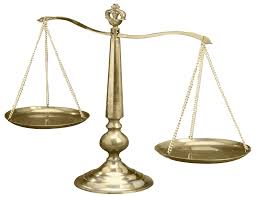
In my last article I wrote about the urgency of preparing our companies, agencies and schools for the future of work, and the business trends contributing to our generally unsatisfactory progress. My assertion was, and is, that in this new era the best way to advance the way we work is to manage the energy of our businesses. Doing so gives us the clarity to understand how things work, what gets in the way, and what it takes to more consistently achieve good outcomes and financial results. This article is an introduction to how Enterprise Energy works.
Enterprise Energy is a very real thing. In the world of physics, energy is defined as the capacity of a physical system to perform work. That definition carries easily into the world of business. In this world, the “physical system” is a company, agency or educational institution. Its level of energy, which is determined by the success of its collective work streams, determines its current capacity to perform work. To optimize capacity during any given time period, the trick is to generate more energy than you use in the performance of the work. For any business, the greater the net gain in energy, the more successful it will be.
Two Kinds of Energy
When we look at how Enterprise Energy works we recognize two kinds of energy:
Positive Energy is the type of energy discussed above. It gives a business its capacity to perform work. This work ultimately includes the production of products and the provision of services. Businesses receive money for their products and services, which injects positive energy back into the systems.
Negative Energy opposes and/or wastes positive energy, which takes away from the ability of a business to perform work. Conflict is the most common manifestation of negative energy. It is extremely wasteful, and it produces its own collateral negative energy that affects the ability of people to perform work. It damages and erodes assets like products (quality and value) and people (health and engagement). Think of negative energy as positive energy that has gone to the dark side.
 Rules of the Game
Rules of the Game
Every business creates both positive and negative energy. Creating positive energy, and avoiding the creation of negative energy, should be the primary goal. Companies are systems. At any given moment they are throwing off some amount of positive energy, and some amount of negative energy. Put it all together and the net of those two is either positive or negative. Where the needle points at any given time is like a barometer of the current state of the business. The cumulative total of these energy readings over a period of time, say three months or a year, determines the overall health of the business. And yes, that determines top and bottom line performance.
Positive energy drives successful business. It translates into money, and many other benefits and valuable outcomes for our customers, employees, stakeholders and stockholders. At the root, it’s not about money. It’s about positive energy. Money is a byproduct. If you want financial success, manage the energy.
 Energy and People
Energy and People
Both positive and negative energy affect people. In business, people make products and provide services. How well and how efficiently that happens has everything to do with the energy they generate and the energy around them. It affects what people bring to the table every morning, how they work, and what they pay attention to. And at the more collective level it drives social norms, company culture and the relationship of the business to the rest of the world.
The Indicators of Energy
When we learn to identify and pay attention to the indicators of energy, we gain deep insights into work, and how to optimize it. Since energy is invisible to most people, we need the indicators to make the energy visible. Things like high performance, low performance, resistance to change, and chronic conflict are examples of the many indicators that manifest in organizations.
But we also need a context to make sense of the indicators and understand what they are telling us. For example, a business context includes work goals, (e.g., a project goal), the work itself, (e.g., the work of the project), and the involved assets. The assets involved in a particular context may include a number of different elements. For example, business elements may include organizational structure, role definitions, business processes, systems, incentives, and the people involved in the project as team members, stakeholders, users, customers, etc.
Our businesses include many types of work, and they all have their own context. Every work stream, from the smallest individual work effort to the largest business function has its own context and set of involved assets. These assets are the actors in the play. Each affects the energy of the work stream, positively and/or negatively.
Optimizing Work

In the work streams, we are striving to create a powerful harmony where all of the involved people and elements are aligned in their energies, which are aligned to the goal of the work. Think about that for a minute. It’s a simple concept, yet it is amazing how often in business we are struggling to get work done in difficult situations where this harmony does not exist. In our traditional practice of what I call surface-level management, all we really see is that the work is not going well. We don’t know why, and we don’t know how to fix it. That’s why “seeing” and managing energy is so important.
Diagnosing Problems
In diagnosing problems, we are looking for misalignments, because misalignments always create negative energy. In business, misalignments occur at all levels. At the enterprise level they are caused by flaws or insufficiencies in the design of enterprise elements. These may include organizational structure, systems, business processes, departmental role definitions, incentive structures, etc.. They also occur within groups or teams due to differences in goals and agendas, variations in work effort and approach, differences in capability levels among involved people, etc. And they occur within individuals themselves in their performance of work. These may be misalignments of intellectual, emotional and capability factors with what they are being asked to do and/or how they are being asked to do it.
All of these misalignments create negative energy that works against the positive energy of the work effort. By recognizing and addressing these misalignments we maximize alignment among the players in the work stream. This alignment, in turn, serves to optimize the work outcome.
The Bottom Line
Harnessing the power of energy in business is a very real thing. You’re now familiar with the concept, but there is much more to know about. If you’re interested in further reading, my upcoming book, The Energy Equation: Unlocking the Hidden Energy of Business, delves into how Enterprise Energy works in our businesses and how we can optimize its positive impact while avoiding many of its damaging manifestations. Learn to recognize, “see”, understand and manage energy as effectively as you see and manage visible things (e.g., processes, financials, etc.). Discover a new power and a new set of tools. Then start transforming your own business, how you work, and how you work with others.
For Help With Your Business
Advance Consulting offers consulting, coaching and training services to help you harness the power of energy in your business. If you would like to discuss how we can help you and your business, contact us for a consultation.
